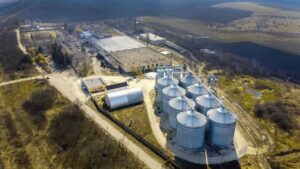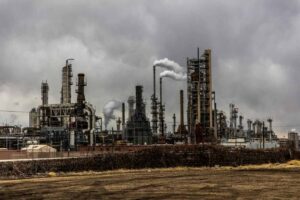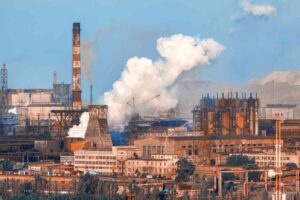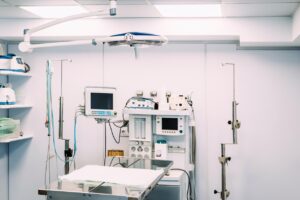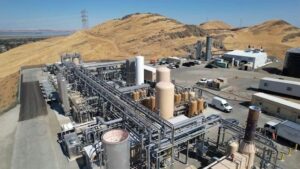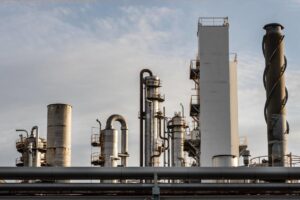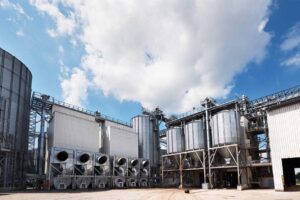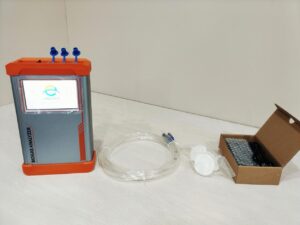Medical environments demand absolute precision—without reliable gas analysis, both patient safety and treatment outcomes are at risk.
Gas analyzers in medical applications ensure the precise monitoring of oxygen, carbon dioxide, anesthetic agents, and other gases, playing a vital role in patient care, diagnostics, and hospital safety.

While we now understand their importance, it’s worth exploring how gas analyzers function in specific medical settings—and what technologies make them indispensable.
What Role Do Gas Analyzers Play in Patient Monitoring?
In modern medical environments, especially during anesthesia and intensive care, continuous monitoring of respiratory gases is a cornerstone of patient safety. Gas analyzers are essential tools that measure concentrations of oxygen (O₂), carbon dioxide (CO₂), nitrous oxide (N₂O), and volatile anesthetic agents in real time. These measurements are critical for assessing the patient’s ventilatory status and ensuring the proper administration of anesthetic gases.
One of the most vital parameters monitored is end-tidal CO₂ (EtCO₂), which reflects how effectively a patient is ventilating. A sudden drop in EtCO₂ can indicate apnea, airway obstruction, or cardiac arrest, often before other clinical signs appear. Likewise, measuring inspired and expired oxygen levels helps confirm that the patient is receiving sufficient oxygen and that the gas exchange process is functioning correctly.
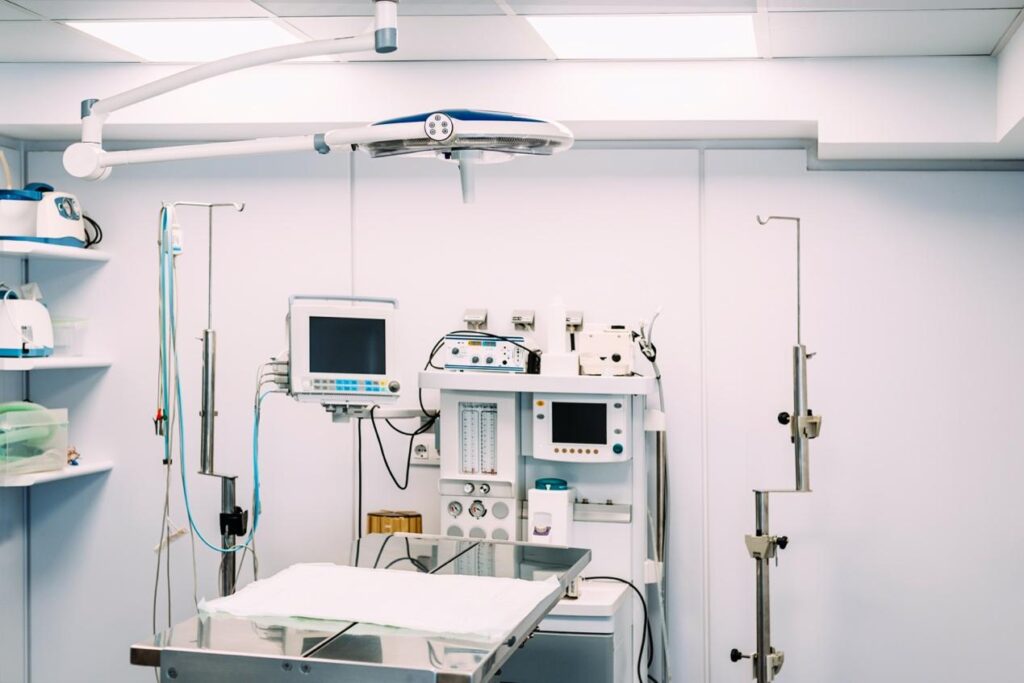
During surgery, gas analyzers integrated into anesthesia machines provide clinicians with immediate feedback on the concentration of delivered and exhaled anesthetic agents such as sevoflurane or isoflurane. This allows precise titration of anesthesia depth, minimizing the risk of awareness during surgery or overdose-related complications.
In critical care units, gas analyzers are also used with ventilators to ensure that oxygenation and ventilation parameters are optimized for patients with respiratory failure, trauma, or neurological conditions. Alarms and data trends provide early warnings that guide timely interventions, ultimately enhancing patient outcomes and reducing preventable incidents.
By delivering accurate, real-time information about a patient’s respiratory status, gas analyzers play an irreplaceable role in safeguarding life during high-risk procedures and in unstable clinical scenarios.
How Are Gas Analyzers Used in Respiratory Therapy?
In modern medical environments, especially during anesthesia and intensive care, continuous monitoring of respiratory gases is a cornerstone of patient safety. Gas analyzers are essential tools that measure concentrations of oxygen (O₂), carbon dioxide (CO₂), nitrous oxide (N₂O), and volatile anesthetic agents in real time. These measurements are critical for assessing the patient’s ventilatory status and ensuring the proper administration of anesthetic gases.
One of the most vital parameters monitored is end-tidal CO₂ (EtCO₂), which reflects how effectively a patient is ventilating. A sudden drop in EtCO₂ can indicate apnea, airway obstruction, or cardiac arrest, often before other clinical signs appear. Likewise, measuring inspired and expired oxygen levels helps confirm that the patient is receiving sufficient oxygen and that the gas exchange process is functioning correctly.
During surgery, gas analyzers integrated into anesthesia machines provide clinicians with immediate feedback on the concentration of delivered and exhaled anesthetic agents such as sevoflurane or isoflurane. This allows precise titration of anesthesia depth, minimizing the risk of awareness during surgery or overdose-related complications.
In critical care units, gas analyzers are also used with ventilators to ensure that oxygenation and ventilation parameters are optimized for patients with respiratory failure, trauma, or neurological conditions. Alarms and data trends provide early warnings that guide timely interventions, ultimately enhancing patient outcomes and reducing preventable incidents.
By delivering accurate, real-time information about a patient’s respiratory status, gas analyzers play an irreplaceable role in safeguarding life during high-risk procedures and in unstable clinical scenarios.
What Technologies Make Medical Gas Analyzers Accurate and Reliable?
Accuracy and reliability are non-negotiable in medical gas analysis. Clinicians rely on every reading to make real-time decisions in high-risk environments such as operating rooms, ICUs, and emergency departments. To achieve the required performance, modern gas analyzers are built on advanced sensor technologies that are specifically engineered for the precision and stability that medical applications demand.
Here are the core technologies that enable this level of performance:
1.Infrared (IR) Spectroscopy
Infrared spectroscopy is one of the most widely used technologies in medical gas analyzers, especially for measuring carbon dioxide and volatile anesthetic agents. This method works by detecting the absorption of specific infrared wavelengths by gas molecules. Since each gas absorbs IR light differently, this allows precise identification and quantification.

IR analyzers offer:
- Fast response times
- High selectivity for target gases
- Minimal maintenance due to non-contact sensor design
This technology is particularly useful in capnography, where the rapid measurement of end-tidal CO₂ is essential for tracking ventilation status.
2.Paramagnetic Oxygen Sensors
For oxygen measurement, paramagnetic sensors are considered the gold standard in many medical settings. Oxygen molecules are attracted to magnetic fields, and paramagnetic analyzers exploit this property to determine O₂ concentration with high accuracy.
Advantages include:
- No chemical degradation (unlike galvanic cells)
- Long-term stability
- Fast response without requiring frequent calibration
These features make paramagnetic sensors highly suitable for continuous O₂ monitoring in anesthesia and critical care systems.
3.Electrochemical Sensors
These are commonly used for portable and bedside O₂ analysis, particularly in devices like oxygen concentrators or spot-check analyzers. While not as long-lasting as paramagnetic types, electrochemical sensors offer a good balance of cost, sensitivity, and ease of integration.
Recent innovations have improved their accuracy and longevity, making them suitable for backup or secondary systems.
4.Mass Spectrometry (MS)
Although more expensive and typically reserved for high-end systems, mass spectrometry offers multi-gas detection with unmatched sensitivity and specificity. It is used in some advanced anesthesia monitoring systems and metabolic analysis.
MS systems can simultaneously detect:
- O₂
- CO₂
- N₂O
- Multiple anesthetic agents
They are valued for their ability to track minute changes in gas composition with near-instant response, which is vital during complex surgical procedures or research-based diagnostics.
5.Photoacoustic Spectroscopy
Emerging in specialized applications, this technique involves detecting sound waves generated by gas molecules absorbing pulsed light. It combines the sensitivity of IR detection with reduced interference, making it useful for trace gas analysis in low-concentration environments such as neonatal units.
Why Are Gas Analyzers Critical in Hospital Central Gas Supply Systems?
In large medical facilities, central gas supply systems deliver essential gases—such as oxygen, nitrous oxide, medical air, and carbon dioxide—through an extensive pipeline network to operating rooms, ICUs, emergency departments, and patient wards. The safety and efficiency of this system depend heavily on precise and continuous gas monitoring, a task that falls squarely on gas analyzers.
Unlike individual patient monitors, analyzers used in central gas systems operate at a facility-wide level. They continuously measure gas purity, concentration, humidity, and pressure to ensure that what reaches the patient is both safe and within strict regulatory parameters. A small deviation in oxygen concentration, for example, can affect hundreds of patients simultaneously. Therefore, real-time detection is not just convenient—it’s life-critical.

Here’s why their role is indispensable:
1. Ensuring Gas Purity
Medical gases must meet stringent pharmacopeial standards. Gas analyzers are used to detect contaminants such as moisture, hydrocarbons, or other trace gases that can be introduced through faulty storage, leaks, or pipe corrosion. Continuous purity monitoring ensures that all departments receive medical-grade gas suitable for human use.
2. Monitoring Supply Pressure
Stable pressure is essential for consistent gas delivery. Analyzers integrated with pressure transducers can detect drops or surges that may signal leaks, valve malfunctions, or pipeline blockages. Early warnings allow technicians to intervene before pressure anomalies compromise patient treatment.
3. Leak Detection and System Integrity
Undetected gas leaks pose multiple risks—including fire hazards (in the case of oxygen), operational inefficiency, and cost escalation. Advanced gas analyzers detect even minute leaks by tracking gas flow and concentration over time, enabling preventive maintenance and reducing system downtime.
4. Redundancy and Alarm Systems
Most central gas systems use multiple analyzers at key nodes—such as the source, manifold room, and departmental outlets. These are connected to centralized control panels that trigger visual and audible alarms when abnormal values are detected. This redundancy ensures that failure in one sensor doesn’t compromise the entire safety net.
5. Compliance and Documentation
Modern analyzers often include data logging features, which help hospital engineers and compliance officers maintain accurate records for audits and regulatory inspections. These logs provide evidence of gas quality over time, which is critical for accreditation and legal protection.
Gas analyzers in central hospital systems function as the unseen defenders of infrastructure integrity. By guaranteeing the quality and stability of life-sustaining gases throughout the facility, they protect not just individual patients but the entire clinical ecosystem.
How Do Gas Analyzers Support Laboratory and Diagnostic Applications?
Beyond the operating room and ICU, gas analyzers also play a crucial role in the controlled environments of medical laboratories and diagnostic departments. Here, their function is not focused on direct patient monitoring, but on creating and maintaining the ideal conditions for clinical tests, cellular experiments, and metabolic measurements. Accurate gas composition is vital in these contexts, as even minor deviations can compromise the validity of results or the integrity of biological samples.
1. Supporting Blood Gas Analysis
Blood gas analyzers—essential in emergency and critical care diagnostics—rely on accurate calibration gases to determine arterial pH, partial pressures of oxygen (PaO₂) and carbon dioxide (PaCO₂), and bicarbonate levels. Central gas analyzers are used to verify the quality and composition of calibration gases and to monitor inline gas inputs. This ensures that blood gas values are reliable and reproducible, supporting rapid clinical decision-making in life-threatening situations.
2. Maintaining Controlled Environments for Cell Culture
In microbiology, virology, and regenerative medicine labs, incubators often require strict atmospheric conditions—typically 5% CO₂ and balanced humidity and temperature—to maintain optimal pH and cellular activity. Gas analyzers monitor CO₂ levels in real-time to ensure that cultures grow under ideal physiological conditions. Variations in gas composition can alter cell behavior or trigger unwanted stress responses, invalidating entire experiments.
3. Used in Metabolic and Respiratory Diagnostics
Gas analyzers are fundamental to metabolic testing systems such as indirect calorimeters, which assess energy expenditure by measuring the respiratory exchange ratio (RER)—the ratio of CO₂ produced to O₂ consumed. These systems are used in both clinical nutrition assessments and pulmonary function testing. Accurate gas analysis enables clinicians to determine metabolic rate, evaluate respiratory efficiency, and diagnose conditions such as chronic obstructive pulmonary disease (COPD) or exercise-induced asthma.
4. Monitoring Medical Gas Supply in Analytical Instruments
Many diagnostic instruments, including mass spectrometers and gas chromatographs, require carrier or calibration gases with highly specific compositions. Central gas analyzers are deployed to monitor the purity and flow of these specialty gases to protect sensitive instruments and ensure consistent results.
5. Environmental and Occupational Safety
In labs handling volatile chemicals or infectious samples, gas analyzers are integrated with ventilation systems to monitor air quality and detect the buildup of hazardous substances. This ensures compliance with safety standards and protects laboratory personnel from occupational exposure.
In laboratory and diagnostic environments, gas analyzers do more than monitor—they actively safeguard the accuracy, consistency, and safety of every result generated. Their role is foundational in transforming complex biological processes into actionable clinical data.
Conclusion
Medical gas analyzers are silent guardians of patient safety, enabling precision in treatment, diagnosis, and infrastructure. From the operating room to the lab bench, their role is indispensable in modern healthcare.
If you have any questions, please contact us!





